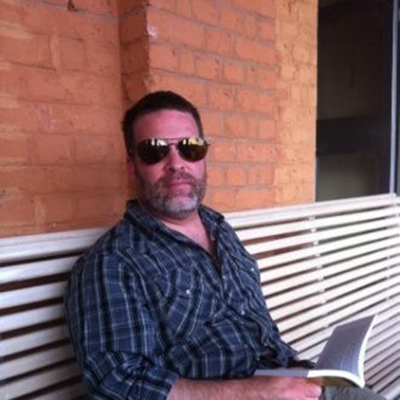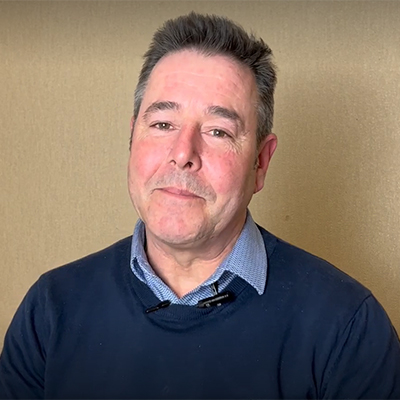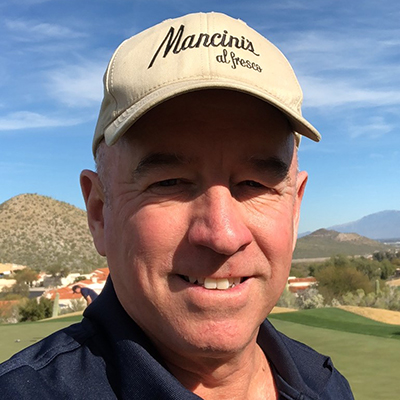

The art and science of beverage technology
BevTech® Proceedings are a benefit of membership for current ISBT members only and are subject to the BevTech Copyright (located at the bottom of the page).
You may use these links to jump to that committee.

Exempt from Certification Update
Glen Dreher
D.D. Williamson
Sr. Product Development Scientist
2023 Regulatory Update for Caramel Color and Natural Colors

Preservatives Update
Paul Marquardt
LANXESS
Director of Americas Beverage Technology

Carbon Foot Print of Natural Colors
Thomas Krahl
Doehler GmbH
Global TPM Colours


Bubbles with Benefits Craft Fermented Beverages
Hannah Crum
Kombucha Brewers International
President & Co-Founder
Caitlin Jamison
Rowdy Energy
VP of Research, Development and Quality

Plant-Based Milk: Problem-Solving Toolbox for Supply Chain Flexibility
Sean McHenry
IMCD Technical
Business Development Manager
Plant-based milks (we can officially call them that now) continue to be extremely popular and are increasing in variety. Developers are formulating with a wide range of proteins and other ingredients to achieve different functionalities and nutritional or label claims, i.e. barista use or stabilizer-free. It is common to have performance gaps between these plant-based beverages and their dairy counterparts. Typical challenges are suspension, emulsification, mouthfeel and especially, foaming. Compounding these challenges are ongoing ingredient shortages leaving few formulas unscathed. This presentation will touch upon a number of ingredients and strategies that are available to help the product developer navigate these situations.

Innovative Filling Technologies and Their Impact on Processing
Joerg Zacharias
Krones AG
Expert
In the current time it is becoming clearer than before that the pursuit of basic needs, security and sustainability are the drivers for the vision of innovations as solutions for tomorrow. New filling systems are also developed based on these challenges. Krones has two new opportunities that will impact beverage processing and the entire bottling line. They are called Flexible Filling and Dynafill. The Flexible Filling performs the product mixing in the filling valve. This enables the ingredients to be dosed directly during filling. Before the filling valve, there are separate systems/streams for the base and the ingredients. This means the physical elimination of a mixer, along with the elimination of production start-up problems. In addition, this leads to reduced product changeover times and minimized downtime for CIP. The hygienic design by minimizing surfaces and targeted turbulent flow minimizes aroma carryover and enables a bottle-by-bottle product change without intermediate rinsing. Apart from that, Dynafill takes a different approach. It stands out as a revolutionary filling technology as part of a resource-saving factory of the future. Released cooling energy that can be used intelligently in another area, as well as a reduced microbiological risk during filling. Finally, filling and capping takes place in one unit, in less than five seconds, and at ambient temperature. Warm filling up to 30°C is possible. The Dynafill concept enables completely new energy and line concepts. In the presentation, these two new filling principles will be discussed and their effects on processing will be shown.

Avoiding Deposits Using Ultrasound with Artificial Intelligence
Marcus Krueger
HASYTEC Electronics GmbH
Director Distribution Sales
This presentation will illustrate the positive effects of low-energy ultrasound technology used to preventing organic (biofilm) and inorganic deposits (calcium, manganese, lime and lye stone, salt, minerals in general) on liquid carrying surfaces in various industrial applications. The presenter will also provide insights about the working principle and differences between low- and high-power ultrasound as well as stable and instable cavitation. With the built-in artificial intelligence the system is able to find the best possible frequencies to match the resonancy and maximize efficiency. The advantages of using this ultrasound technology as a preventative tool across different industries, especially in the food & beverage sector, in several industrial applications such as cooling towers, plate heat exchangers, evaporative condensers, wet separators, bottle washing machines, pasteurizers, milk heaters, and many more will be displayed providing various examples. Information and details will be shown how this smart technology is able to significantly reduce the use of biocides and chemicals in cooling and production processes and how operation and production times can be considerably extended and CIP reduced.

Methods for Detection of Micro- and Nano-plastics
Victor Sanfins Cecon
Iowa State University
Graduate Research Assistant
Micro- and nanoplastics have become an issue affecting the food chain and product integrity. A review of novel methods recently published in the literature will be discussed for detecting and quantifying the micro- and nanoplastics in different food matrices, including our experience in a government-funded project to analyze animal feed streams.

How to Mitigate the Negative Impact of High-Volumes of rPET When Producing Light-Weight Bottles
Sudha Jebadurai
Agr International, Inc.
Chief Operating Officer
The reheat stretch blow molding process has advanced significantly over the past quarter century. Production speeds per cavity have increased tenfold. Material processing weights are reduced to a similar degree. Use of recycled materials is on the rise. This high speed, light weighted, rPET process is no longer a fit for antiquated manual process control methods. Are you using time-consuming manual process control methods using manual quality assurance testing? Sending a mold round of bottles to the lab for quality testing while production is blindly flying by? Tired of manual blow molding processes, where the process engineer must stand by the line, to make process adjustments when the new batch of preforms are dumped, or a door swings wide open causing the environmental conditions to change? Seeing high levels of rejects, airveyor jams, labeler issues due to material distribution variability of the bottles produced? Manual processes (both process control & quality assurance testing) will lead to lower productivity, thereby lower your profitability. Think Process Automation. Process Automation delivers increased factory productivity by streamlining the processes, lowering running costs, delivering higher quality and higher production speeds. Are any of the below scenarios in your present or future... 1. Is there a need for high speed to increase revenue with the resources you have? 2. Is there a need to reduce cost, by light weighting the preforms, yet, yield the same high quality bottles? 3. Is there are sustainability drive to go-green, and the need to go into rPET? 4. Is there a need to reduce labor and streamlines processes?

Are We Ready to Test Sustainable Packaging?
Steve Davis
Industrial Physics Inc
Product Line Director
When asked about challenges associated with sustainable packaging materials, 71% of packaging decision makers said that quality control is “somewhat” to “significantly” more difficult when dealing with these new materials. Industrial Physics’ original research report, ‘2022 Global Outlook of Sustainable Packaging’, surveyed 250+ packaging professionals across the globe. And the results were illuminating. The push for eco-friendly beverage packaging options is getting stronger for many reasons (waste reduction, environmental footprint reduction, and consumer demand were cited as the most popular options), but the practicalities for manufacturers and labs can often be forgotten in the quest for a greener future. Our report got to grips with the big issues for those dealing with the manufacture of materials used for packaging. We uncovered challenges around the durability and performance of sustainable raw materials, constraints surrounding material sourcing, questions as to the credibility of current testing standards, testing applications that are most difficult when going green, the packaging types that provided the biggest opportunities for sustainable evolution, and much more. Industrial Physics is a global packaging, product, and material test and inspection partner. It’s our purpose to protect the integrity of our customer’s brands and products. For us, that’s about more than just providing equipment, it’s about sharing our knowledge so that together we can strive to discover more efficient and sustainable test and inspection solutions for manufacturers, laboratories, and production lines all over the world.

ISBT rPET Best Practices and Impacts of rPET Material White Paper Update
Lee Malvitz
Plastipak Packaging
Technical Manager
Sustainability subcommittee has completed development of Whitepaper entitled, "Best Practices and Impacts of rPET Material", to promote rPET usage in PET containers for beverages.

What Does One Gram of CO2 Mean to Your Organization?
Sue Wood
Sustain CO2 Ltd
Technical Manager
The biggest challenge in carbonated beverages is keeping them fizzy. Carbonation affects the taste profile and quality of our beverages. We have developed a patented liquid additive that encapsulates CO2 making drinks fizzier for longer. Manufacturers can use less CO2 in their beverages, achieve faster filling speeds and provide consumers with a more refreshing beverage experience.


Are You Releasing Consistent Tasting Ingredients and Finished Product?
Lori Brustad
PepsiCo-Retired
Consumer-Sensory Quality Transformation
Marie Pohler
FlavorActiV Ltd
Commercial Director
The Sensory Subcommittee intends to spot light some of the key contents within the QC Sensory Best Practices document which is now near completion. The Sensory Subcommittee also wishes to gain input and feedback from peer reviewers within the industry to help finalising the document.

Status of Brix Measurement Guidelines
Helga Gschwind
Anton Paar USA
Regional Key Account Manager
Update followed by Q&A and Discussion — This subcommittee has been working on a new document for Brix testing and we welcome early input from the ISBT community.

How Good Can One Drink Be? Making Meaningful ESG Claims in the Age of Greenwashing
Asif Khalid
Tractor Beverage Company
COO
This presentation explores the importance of end-to-end supply-system transparency and ingredient-level impact data, and how businesses can effectively leverage this information to demonstrate their commitment to sustainability and win over the loyalty of eco-conscious consumers. Tractor Beverage is the first beverage brand to track and disclose impact data about its ingredients, supporting the company's commitment to transparency and sustainable sourcing and responding to consumer demand for clean ingredients and environmental responsibility. The company's Organic Impact Tracker is a sustainability impact tracker developed to quantify the benefit of sourcing organic ingredients versus their conventional counterparts. The tool uses five key metrics to show how a single beverage can change the world: synthetic pesticides avoided, organic land supported, carbon emissions avoided, water saved, and improved soil health. While four of the key metrics are proprietary to HowGood, synthetic pesticides avoided is Tractor's proprietary algorithm designed to determine the total amount of conventional pesticides offset as a result of using organically grown ingredients to produce its certified organic, non-GMO beverages. Tractor has effectively eliminated 35 tons of synthetic pesticides from the food system since 2020 as a result of sourcing organic ingredients, with a goal to eliminate 1,034 tons by 2033Tractor is working to make better-for-you craft beverages accessible to all, we are equally dedicated to supporting farming practices that benefit the environment. The industry-leading work is intended to quantify and communicate our commitment to responsibly-grown ingredients in order to help our customers fully understand the positive impact of choosing a Tractor beverage and play a part in transforming the beverage industry as a whole.

The Role of Permeation Testing on the Road to Sustainable Packaging
Mike Kragness
Ametek Mocon
Permeation Application Specialist
As the push for greener packaging alternatives increases, novel structures are being designed with the necessity to meet or exceed current barrier standards to ensure product integrity and adequate shelf life for brand owners. These innovative packaging materials must be accompanied by data justifying their implementation. The testing nuances and challenges of these replacement materials must be understood to allow design efficiency on the way towards shelf-life integrity. Common methods to decrease carbon footprints include, light weighting current packaging designs, instituting compostable packaging materials, including paper based structures and bio polymers. Barrier coatings, PCR blends and new multi-layered structures having increased recyclability, all have their role in this paradigm shift. In this presentation we will provide a brief overview of permeation theory, techniques employed for determining barrier performance, how to utilize data to verify shelf-life objectives are being met, and discuss unique testing challenges that these unaccustomed structures produce.

Global Legislation Overview and Considerations from a Manufacturing Perspective
Kathy Magee
Lancer Worldwide
Director - Testing and Compliance
This presentation will provide an overview of numerous legislative requirements you should consider to ensure your product is compliant with various laws and regulations. Shipping non-compliant parts and equipment could result in fines, recalls or lost sales and discontent from your customers.

Prevention Of Thermal-Processed Juice and Beverages Spoilage: Are We There Yet?
Emilia Rico
BCN Research Laboratories, Inc
CEO
Thermal processed juices and beverages can be spoiled by heat-resistant microorganisms such as Alicyclobacillus spp. (TAB/ACB) and heat-resistant molds (HRM). These microorganisms produce heat-resistant spores that can survive the thermal treatment and spoil the product during storage. These products can also be spoiled by heat-sensitive microorganisms such as the lactic acid bacteria (LAB), the acetic acid bacteria (AAB), yeasts and molds. For hot-filled products, the contamination by these microorganisms occurs after the filler and is usually due to faulty caps and seal, delayed internal vacuum formation, excessive moisture on the threads, and biofilm in the cooling tunnel among others. This presentation will present an overview of the types of spoilage of thermal processed juices and beverages and review the different ways to prevent it. Can we prevent spoilage? Are we doing enough to prevent it? Are we there yet?

Update on Current Innovations in Sanitizers
David Hird
Capacity Chemical
Director of R&D
Emerging chemistries, new technologies and a totally different kind of automation. Let's explore what changes we could see impact chemical sanitation in the beverage industry, and beyond, over the next decade. We'll explore next-generation quats, what comes after PAA and some breakthrough process control tech. We'll also look at a much larger looming change in the space of automation that could fundamentally impact how sanitation is designed, implemented and executed, or, might fizzle out to nothing.

Open Discussion / Round Table on Best Practices for Verifying Flavor Removal After CIP
Kris Krueger
Diversey
Aplication Scientist
The sanitation chairs would like to invite interested parties for a roundtable conversation on how to validate flavor removal after CIP.

How Flexy Tanks Can Help Reduce Your Supply Chain Bottle Necks
Michel Garrido
Techno Group
Managing Director
Flexitanks have been around the industry for many years but have not been a reliable alternative solution to ISO containers. They have issues with design flaws, material defects, heating issues and substandard manufacturing processes that have prevented the Food Industry from adopting them as a lower cost alternative to ISO's. Covid also has created a huge supply chain issue for availability of ISO containers and have forced companies to look for alternative smaller containers to meet this pent-up demand. Techno Tank has developed a new design that has incorporated all the best and eliminated all operation and manufacturing issues that have plagued the flexibag industry.

UV Treatment of Liquid Sugar: A Sweet Alternative
Anmol Saggar
Trojan Technologies
Global Market Strategy Specialist
Meeting the ever-more rigorous standards required in the production of liquid sugar is a real challenge for food and beverage plants. In today’s increasingly regulated and safety-conscious beverage market, sugar processing facilities are striving to meet more stringent quality standards and implementing processes to prevent microorganism growth. Microbial growth can cause food discoloration, adverse flavors, undesired odours and reduced product shelf-life, as well as increased risk of causing infection and ill-health. Controlling bacterial growth is, therefore, an important issue. The threat of microbial contamination is further increased as manufacturers respond to consumer demand for reductions in chemical additives and preservatives. As a result, food and beverage manufacturers are looking for alternative techniques to protect their products from bacterial contamination while maintaining product quality and shelf-life without chemical additives/preservatives. For those liquid sugar products that can tolerate high temperatures, heat pasteurization may be an option. However rising energy costs and the space constraint in many food processing plants have led to the successful adoption of ultraviolet (UV) technology as an energy-efficient, physical and chemical-free solution for controlling microbial contamination. UV inactivates all known food spoilage organisms, including bacteria, molds, viruses and their spores. Syrups – solutions of sugars like sucrose, fructose and glucose – are key ingredients in thousands of food and beverage products, adding sweetness to soft drinks, fruit juices, confectionary and even tomato ketchup. UV treatment will typically provide a 99.99% reduction in microorganisms in a single pass. Virtually any liquid can be effectively treated using UV, including the two most often used natural sugars: fructose (fruit-based sugar) and sucrose (cane sugar). This presentation will discuss how UV works for liquid sugar, along with the economics and the benefits of UV compared to traditional heat pasteurization. As well, a case study from a major beverage bottler utilizing UV will be presented.

Advances and Case Studies in High Recovery RO Ingredient Water Systems
Michael McDonald
Veolia Water
Presentation will discuss the various unit operations for operating multiple-barrier Ingredient Water systems at a high volumetric recovery, with case studies of best-practice systems. Also included will be a grid of actual recovery rates for systems based upon influent TDS/conductivity, and automated system maintenance techniques that simultaneously enables both high recovery and maximum system uptime (extended mean-time between CIP operations). High-recovery Primary-RO design will be contrasted with Primary RO feeding a smaller Recovery RO with Capex/Opex and system footprint implications for the two approaches. Presentation will close with new approaches to capturing the last 5-7 percent of RO brine discharge.

Odor Control, Savings, and Operational Benefits Generated by Retrofitting a Wastewater Treatment Plant with Super-Saturating Dissolved Oxygen in a Side Stream Process
Ronit Erlitzki, PhD
ChartWater / Chart Industries
Director of Business Development & Innovation Water, Carbon Capture, Hydrogen
Odor control issues in wastewater plants under anaerobic conditions due to proliferation of Sulfate Reducing Bacteria (SRB), and consequently, hydrogen sulfide accumulation, is a well-known problem in the beverage industry. City Brewing Company, located in La Cross, Wisconsin, faced the problem of Hydrogen Sulfide exceeding the permitted 25 ppm. In this presentation we explain how supersaturated dissolved oxygen technology (SDOX) works, describe specific challenges onsite, and share performance data before and after the retrofit.

TC Major Initiatives
Doug Glanz
ChemTreat
Senior Technical Consultant - Pretreatment
Presentation and live demo of Barriers of Separation tool that will be available for use by ISBT members
Presentation Not Provided